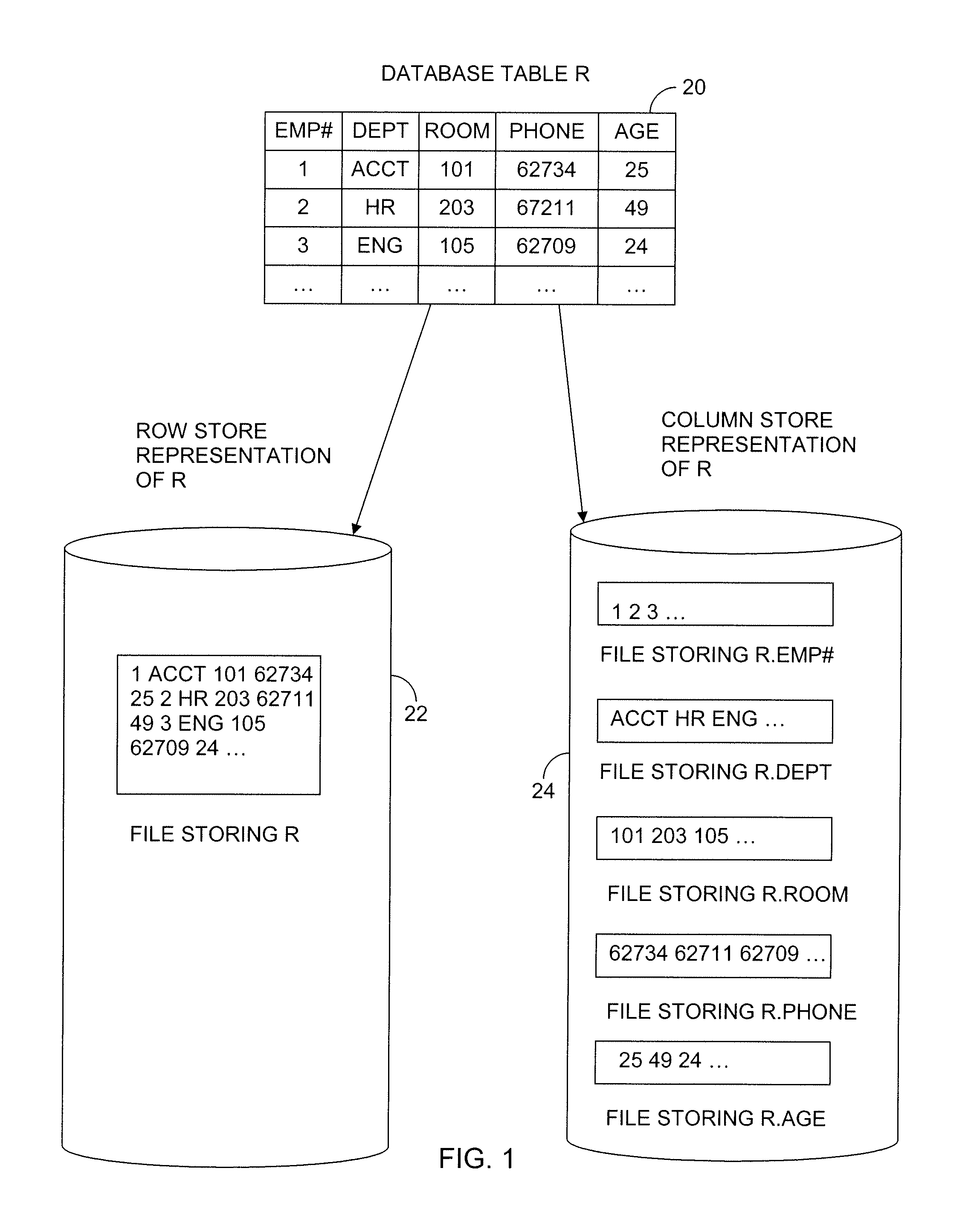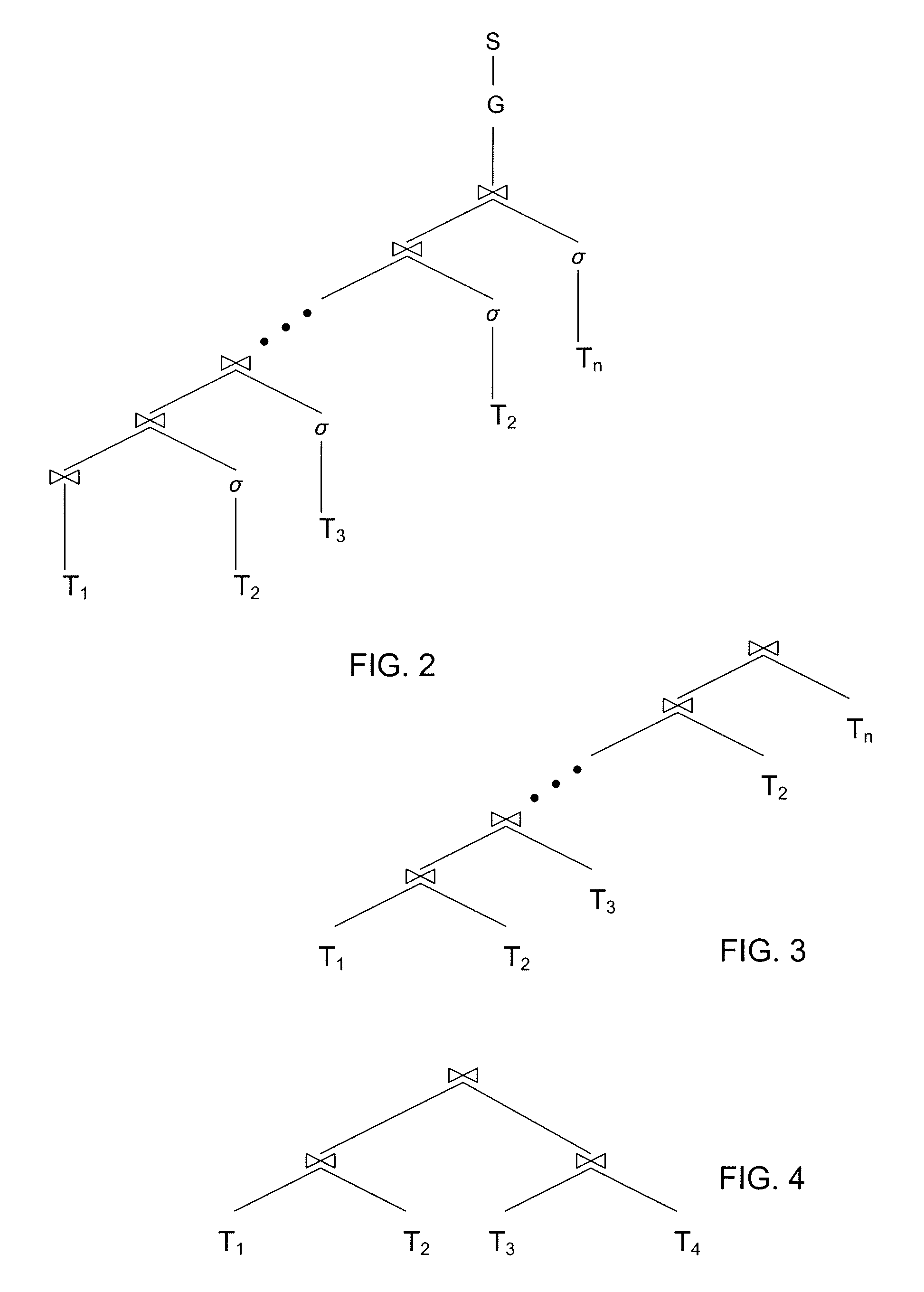Query optimizer with schema conversion
a query optimizer and schema technology, applied in the field of query optimizer with schema conversion, can solve the problem of limited set of allowed bushy plans
- Summary
- Abstract
- Description
- Claims
- Application Information
AI Technical Summary
Benefits of technology
Problems solved by technology
Method used
Image
Examples
Embodiment Construction
[0098]The present invention's teachings are applicable to a wide range of database systems implemented in essentially any type of computer system. An example is the computer system that FIG. 5 depicts. That drawing's computer system 26 includes a microprocessor 28. Data that the microprocessor 28 uses, as well as instructions that it follows in operating on those data, may reside in on-board cache memory or be received from further cache memory 30, possibly through the mediation of a cache controller 32. That controller can in turn receive such data and instructions from system read / write memory (“RAM”) 34 through a RAM controller 36 or from various peripheral devices through a system bus 38. Alternatively, the instructions may be obtained from read-only memory (“ROM”) 40, as may some permanent data.
[0099]The processor may be dedicated to DBMS operations, or it may additionally execute processes directed to other functions, and the memory space made available to DBMS operations may ...
PUM
 Login to View More
Login to View More Abstract
Description
Claims
Application Information
 Login to View More
Login to View More - R&D
- Intellectual Property
- Life Sciences
- Materials
- Tech Scout
- Unparalleled Data Quality
- Higher Quality Content
- 60% Fewer Hallucinations
Browse by: Latest US Patents, China's latest patents, Technical Efficacy Thesaurus, Application Domain, Technology Topic, Popular Technical Reports.
© 2025 PatSnap. All rights reserved.Legal|Privacy policy|Modern Slavery Act Transparency Statement|Sitemap|About US| Contact US: help@patsnap.com



